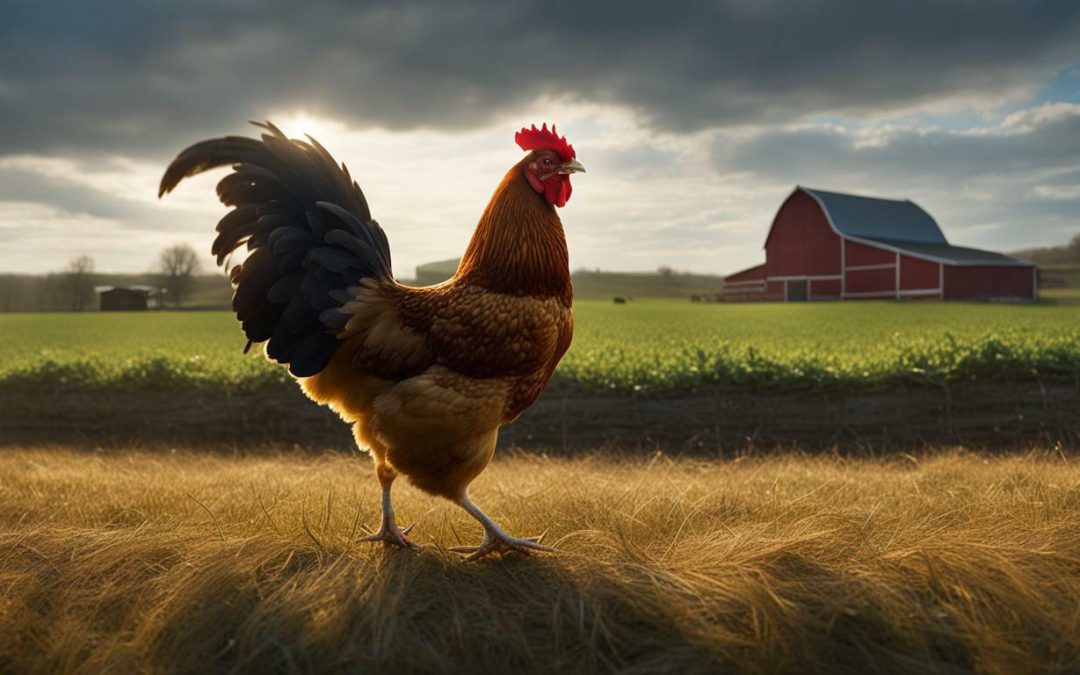Many people are curious about whether chickens can fly. The answer is not as straightforward as one might think. While chickens are technically capable of flight, their abilities are limited and vary depending on several factors. In this article, we will explore the flight capabilities of domestic chickens and aim to understand their ability to take to the skies.
Key Takeaways
- Chickens are capable of flight, but their abilities are limited.
- Several factors affect a chicken’s ability to fly, including breed and domestication.
- Understanding the anatomy of a chicken’s wings is key to understanding their flight capabilities.
- While chickens may not be proficient flyers, they have unique adaptations that allow them to navigate their surroundings.
- Ultimately, the answer to whether chickens can fly is nuanced and requires a deeper understanding of their physical characteristics and flight abilities.
Factors Affecting Chicken Flight
Now that we have explored the question of whether chickens can fly, let us delve deeper into the factors affecting their flight capabilities.
While some people may assume that chickens are incapable of flying due to their domestication, the truth is more complex. While domestic chickens may not be as adept at flying as their wild counterparts, they still possess some flight capabilities.
So, can backyard chickens fly? The answer is yes, but the extent of their flight may depend on various factors, such as their breed, weight, and age. Some breeds of chickens, such as the Leghorn and the Ancona, are known for their superior flight capabilities. Younger and lighter chickens may also be more agile in the air.
However, there are limitations to how high and far chickens can fly. Their flight is typically limited to short bursts of up to 50 feet and low heights of less than 10 feet. Additionally, their flight may be hindered by factors such as the size and shape of their wings, which are not as conducive to flight as those of other bird species.
It is also important to note that chickens are not designed for sustained flight. Rather, their flight is primarily used for escaping danger or navigating their environment.
In conclusion, while chickens are not known for their impressive aerial feats, they are still capable of flight to some extent. Their flight capabilities depend on various factors, including breed, weight, and age, and are limited by physical and environmental factors. Ultimately, it is important to appreciate the unique flight abilities of chickens and their adaptations to their surroundings.
Anatomy of Chicken Wings
While chickens are not known for their impressive flying skills, their wings do possess unique adaptations that enable them to take to the air. Let’s take a closer look at the anatomy of chicken wings and how it relates to their flight capabilities.
One interesting feature of chicken wings is the arrangement of their feathers. Unlike many birds, chickens have smaller, flatter feathers that are tightly packed together. This provides a smoother surface area for the wing to push against the air, allowing for greater lift and control during flight.
Another factor that contributes to chicken flight is the overall structure of their wings. Unlike many other birds, chickens have large, heavy bodies relative to the size of their wings. This means that more energy is required to achieve lift, which can limit the distance and duration of their flight. Additionally, the bones in a chicken’s wings are fused together, limiting their ability to adjust the shape and angle of their wings during flight.
Despite these limitations, chickens are still capable of short bursts of flight when necessary. In fact, some breeds of chickens have been selectively bred for their flight capabilities, such as the Ayam Cemani and the Jungle Fowl.
So, while chickens may not be considered expert flyers, their wings are still uniquely adapted for their survival and navigation in the world around them.
The Truth about Chicken Flight
After exploring the flight capabilities of chickens and the factors that influence their ability to fly, we can conclude that chickens are not proficient flyers like other birds. While they are technically capable of flying short distances, their flight is limited due to their physical characteristics and domestication. Domestic chickens have been bred for traits such as larger size and meat production rather than flight, which has further hindered their ability to fly.
The arrangement of feathers on chicken wings also limits their flight. Unlike many birds that have a single row of feathers on their wings, chickens have two rows that overlap at the base, creating a less aerodynamic surface. The structure of chicken bones is also not well-suited for flight. Their bones are thicker and heavier in order to support their weight on the ground, making it more difficult for them to lift off into the air.
However, it is important to understand and appreciate the unique adaptations that enable chickens to navigate their surroundings. Chickens are able to use their wings for balance and to help them navigate obstacles on the ground, such as fences and other barriers. Additionally, their wings can help them escape predators and can serve as a form of exercise and entertainment for chickens kept in captivity.
Overall, understanding chicken flight is important for those who keep chickens as pets or for agriculture purposes. While chickens cannot fly like other birds, they possess unique adaptations that allow them to thrive in their environments. By appreciating these adaptations, we can better care for and appreciate these fascinating creatures.
Conclusion
After delving into the question of whether chickens can fly, we can conclude that while they are capable of flying short distances, they are not proficient flyers like other birds. Domestic chickens have been selectively bred for meat or egg production, resulting in physical characteristics that limit their flight capabilities.
Factors such as weight, breed, and the arrangement of feathers all play a role in determining a chicken’s flight capabilities. In addition, domestication and restriction to small spaces reduce their opportunities for flight and development of flying skills.
However, it is important to appreciate and understand the unique adaptations that allow chickens to navigate their surroundings. Their wings and feathers are designed for gliding and short bursts of flight, which enable them to escape from predators and seek food or shelter.
In conclusion, while chickens may not be known for their aerial abilities, their unique characteristics and behaviors make them fascinating and important creatures in the animal kingdom.

